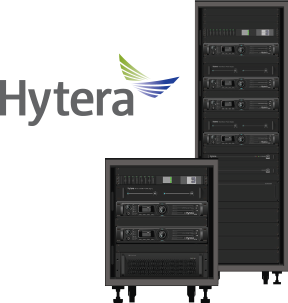In conventional analog systems, two groups can’t share the same repeater if they want to keep their group conversations private. In digital conventional systems, two slots are available per repeater, allowing two groups to share the same repeater and keep their conversations private. In some situations, a two-way radio system will have idle repeaters while others are busy all the time, creating communication inefficiencies.
An XPT digital system manages available repeater channels efficiently. All groups of users have access to all the channels in the system. Each group is assigned to a “home repeater,” but when this one is busy, the XPT system automatically allocates the group to another “free repeater” in the system. The two-way radio user doesn’t have to change channels manually; everything is pre-programmed on the radio.
One advantage of an XPT system versus a Digital Trunk Tier-III system is that there’s no need for a dedicated control channel. All channels are used for traffic, and no specialty FCC license is required.
XPT systems can have up to 8 repeaters with up to 16 available channels, which could lead to 16 conversations simultaneously. The system can only be configured with each channel transmitting voice and data or data.
Users of conventional radio systems will not only benefit from the efficiency and improvement of channel capacity, but they will also experience better audio quality, extended battery life, range enhancement, and better voice services such as Private Call, Caller ID, Text messaging, and GPS.
For those already using Hytera Tier-II DMR systems, migrating to an XPT system can be as easy as obtaining an upgrade license for the RD982S repeaters and connecting them through a layer-2 switch.
Do you want to know more about how an XPT system from HYTERA works and how it can help improve your organization’s two-way radio communications?
